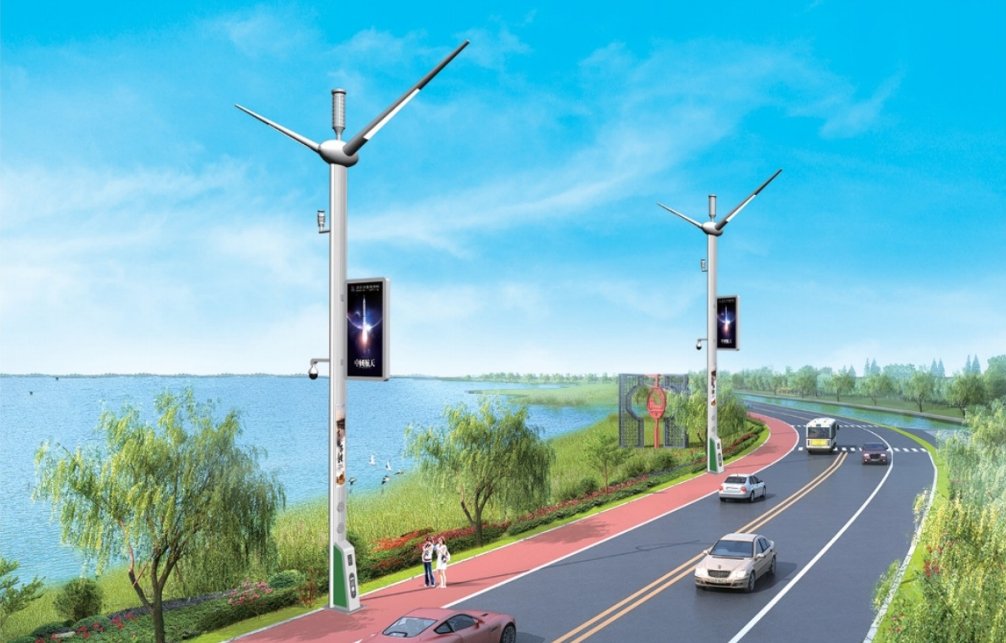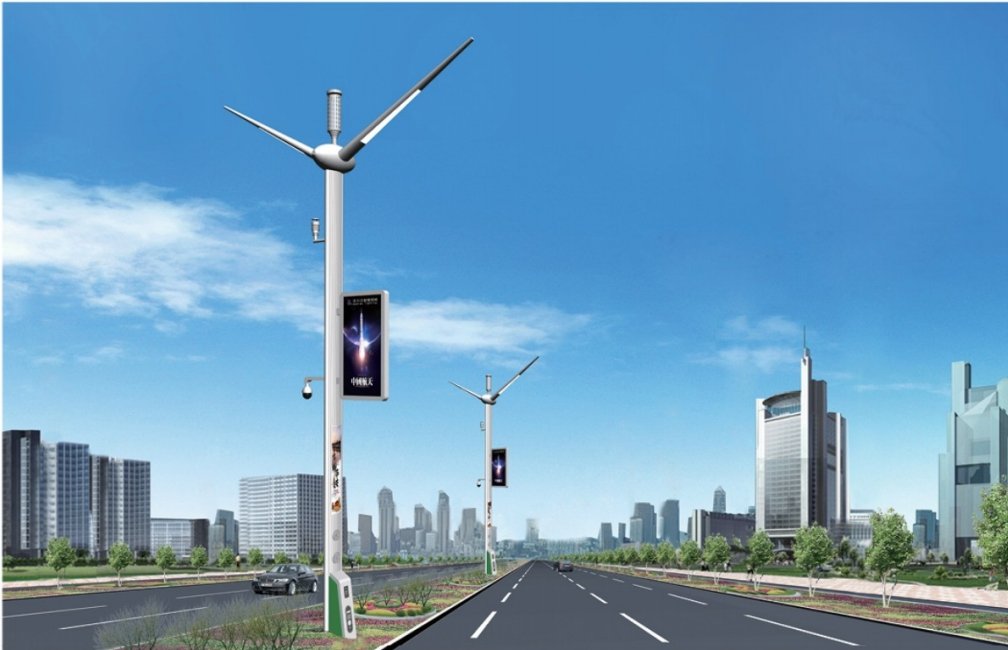Introduction
Urban lighting plays a critical role in enhancing public safety, improving traffic visibility, and creating vibrant communities. However, traditional street lighting systems face significant challenges, including high energy consumption, light pollution, and costly maintenance. As cities worldwide pursue sustainability goals, energy efficiency in urban infrastructure has become a top priority. Smart streetlights have emerged as a transformative solution, offering both environmental and economic benefits by leveraging advanced technologies to optimize energy use.
For a comprehensive guide on selecting the right streetlight system, check out Which is the Best Smart Streetlight System?

Section 1: Understanding Smart Streetlights
Smart streetlights represent a significant advancement in urban lighting, combining high-efficiency LED lighting with innovative technologies such as sensors and IoT connectivity. Unlike conventional streetlights, which operate at fixed brightness levels, smart streetlights can adjust their lighting based on real-time data, enhancing both energy efficiency and functionality. Typical components of smart streetlights include motion and ambient light sensors, communication modules, and a central control system that allows for remote monitoring and management.
To learn more about the role of IoT in transforming urban infrastructure, refer to Smart Cities Dive, an excellent resource for understanding smart technologies in city management.
Section 2: Energy Efficiency Benefits
Reduced Energy Consumption
Smart streetlights are designed to minimize energy consumption compared to traditional lighting systems. LED technology, known for its longevity and low power requirements, forms the foundation of this energy-efficient approach. Traditional streetlights often use high-intensity discharge (HID) lamps that consume more energy and have a shorter lifespan. By switching to LEDs, cities can significantly cut down on electricity usage and maintenance costs.
For more information on LED technology, visit Energy.gov which provides insights on energy-efficient lighting and sustainability.
Adaptive Lighting Systems
One of the defining features of smart streetlights is their ability to adjust brightness levels based on real-time conditions. These lights can dim when no activity is detected and brighten when sensors pick up movement from pedestrians or vehicles. This adaptive lighting reduces unnecessary energy expenditure, ensuring lights operate at full brightness only when needed, and it enhances public safety while lowering overall energy demand.
Remote Monitoring and Management
With a centralized control system, city officials can manage the entire lighting network remotely, accessing real-time data on energy usage, light intensity, and maintenance needs. Remote monitoring enables rapid response to malfunctions and optimizes lighting schedules, reducing both operational costs and resource waste. Many case studies have shown that cities implementing smart streetlights experience substantial reductions in energy expenses and maintenance overheads.
For detailed insights on purchasing lights from MVS, refer to How to Buy the Light from MVS Lighting.
Section 3: Environmental Impact
Reduction in Carbon Footprint
Reducing energy consumption is directly tied to lowering carbon emissions. As cities shift from traditional lighting to smart streetlights, the decreased electricity usage contributes to a smaller carbon footprint. This shift aligns with global sustainability goals, helping urban areas contribute to a cleaner environment and reduce reliance on fossil fuels.
For additional information on sustainability practices, explore UN Environment Programme, which discusses the impact of sustainable urban initiatives.
Minimizing Light Pollution
Traditional street lighting often leads to excessive light spillover, impacting urban wildlife and residents’ well-being. Smart streetlights, with their controlled and directed light output, significantly reduce light pollution. By illuminating only the necessary areas and adjusting brightness based on activity, smart streetlights support a healthier urban ecosystem and create a more pleasant night environment for city dwellers.
For more on light pollution and its effects, visit the International Dark-Sky Association, which advocates for responsible outdoor lighting.

Section 4: Economic Advantages
Cost Savings for Municipalities
Though smart streetlight systems require an initial investment, the long-term financial benefits are considerable. Lower energy bills and reduced maintenance needs translate into significant savings for municipalities. Many governments offer incentives or funding opportunities for cities that prioritize energy-efficient infrastructure, helping to offset upfront costs and accelerate return on investment (ROI).
Increased Property Values
Improved lighting enhances the attractiveness and safety of urban neighborhoods. Well-lit areas tend to see increased pedestrian traffic and economic activity, boosting local businesses and property values. Residents and visitors feel safer in well-lit environments, making smart streetlighting an investment in community vitality and urban development.
For additional reading on how smart streetlighting impacts urban property values, visit our Streetlight Killing Page.
Section 5: Challenges and Considerations
Initial Investment Costs
One of the primary challenges in adopting smart streetlights is the upfront cost. While these systems offer substantial long-term savings, the initial expense can be a hurdle for some municipalities. However, financing options such as energy-saving performance contracts (ESPCs) allow cities to pay for the upgrade over time using the energy savings achieved by the smart lighting system.
For an overview of financing options for sustainable projects, visit GreenBiz, which covers green financing solutions.
Integration with Existing Infrastructure
Retrofitting an established lighting network to incorporate smart streetlight technology can be complex. It requires planning to ensure compatibility with existing infrastructure, along with community engagement to address any concerns about the change. Effective communication and careful planning are essential to ensure a smooth transition and maximize the benefits of smart lighting.
Q&A Section
Q1: What makes your smart streetlights different from others on the market?
A1: Our smart streetlights are built with top-quality LED technology and advanced sensors that provide real-time data analysis, enabling efficient adaptive lighting. Additionally, they come with a 5-year guarantee and are highly customizable to fit unique urban requirements.
Q2: How does the remote management system work?
A2: Our smart streetlights integrate with a centralized control system, allowing operators to monitor and manage each light remotely. This system provides real-time feedback on energy usage, malfunction alerts, and maintenance needs, significantly reducing operational costs.
Q3: Are there financing options available for the initial investment?
A3: Yes, we understand that upfront costs can be a concern. We offer flexible financing solutions and support municipalities in obtaining government incentives for sustainable infrastructure projects. These options allow cities to gradually cover costs through the savings generated from reduced energy consumption.
For more detailed information about the types of streetlights suitable for different settings, check out Which Type of Streetlight is Suitable for Highways(internal link).
Q4: How do your products contribute to environmental sustainability?
A4: Our smart streetlights use energy-efficient LED lights and have adaptive lighting capabilities, which reduce energy waste and minimize carbon emissions. Additionally, they are designed to reduce light pollution, contributing to a healthier environment for both urban wildlife and residents.
Conclusion
Smart streetlights offer a powerful solution for urban lighting challenges, providing energy efficiency, environmental benefits, and economic advantages. By embracing this technology, cities can reduce their carbon footprint, enhance public safety, and achieve substantial cost savings. As urban areas continue to grow and the demand for sustainable solutions intensifies, smart streetlighting represents a forward-thinking approach to building more resilient and energy-efficient cities. The future of urban lighting is bright, with continued advancements in smart technology paving the way for smarter, more sustainable cities.

